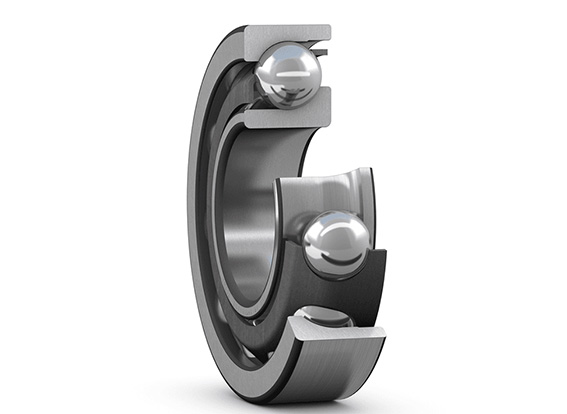Angular Contact
Angular contact ball bearings can bear radial and axial loads at the same time, and can work at higher speeds. The larger the contact angle, the higher the axial load carrying capacity. High-precision and high-speed bearings typically have a 15-degree contact angle. Under the action of axial force, the contact angle will increase.
Single row angular contact ball bearings can only bear the axial load in one direction, and will cause additional axial force when bearing radial load. And can only limit the axial displacement of the shaft or housing in one direction. Angular contact ball bearings have a contact angle of 40 degrees, so they can withstand large axial loads. Angular contact ball bearings are of non-separable design, with shoulders at different heights on both sides of the inner and outer rings. To increase the bearing's load capacity, one of the shoulders is machined lower, allowing the bearing to fit more balls.
Double row angular contact ball bearings can withstand larger radial loads and combined radial and axial loads and moment loads, limiting the axial displacement of the shaft on both sides. The inclination between the inner and outer rings of the double row angular contact ball bearing is limited in the components that are mainly used to limit the bidirectional axial displacement of the shaft and the housing. The allowable inclination angle depends on the internal clearance of the bearing, bearing size, internal design and the effect on The forces and moments on the bearing, and the allowable inclination angle should ensure that excessive additional stress is not generated in the bearing. If there is an inclination angle between the inner and outer rings of the bearing, the service life of the bearing will be affected, and at the same time, the running accuracy of the bearing will decrease and the running noise will increase.
Single row angular contact ball bearings: machine tool spindles, high-frequency motors, gas turbines, booster pumps, drilling platforms, food machinery, indexing heads, repair welding machines, low-noise cooling towers, electromechanical equipment, etc.
Double row angular contact ball bearings: oil pumps, roots blowers, air compressors, various transmissions, fuel injection pumps, food packaging machinery, electric welding machines, electric soldering irons, square boxes, gravity spray guns, inspection and analysis equipment, fine chemical machinery, etc.

![[Page Title]](/template/default/static/picture/Eng-Bearings_Bnaner_50.jpg)
